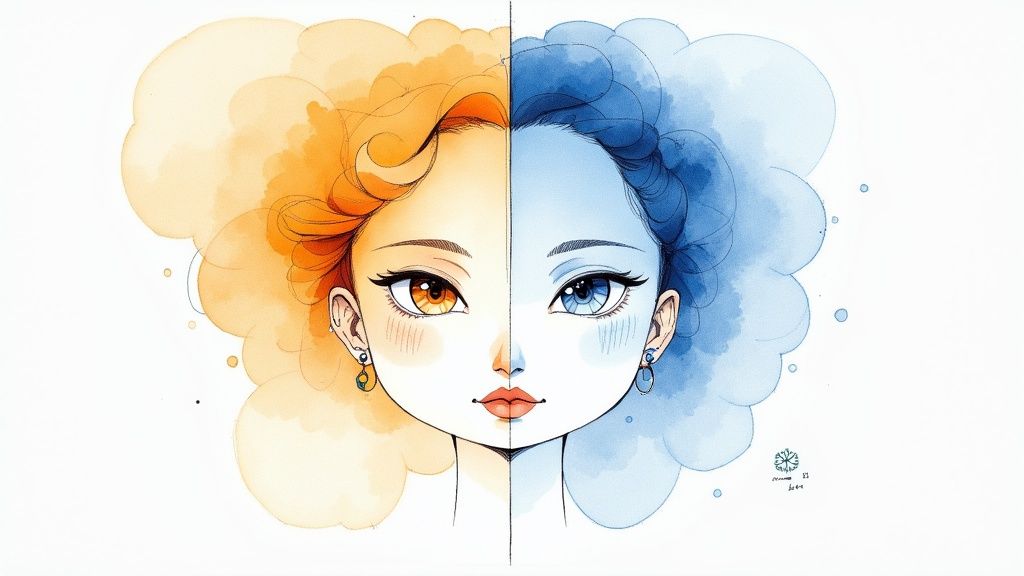
Warm vs Cool Undertone Test A Complete Guide
By Emma Johnson - 9/29/2025
A warm vs cool undertone test is all about discovering the subtle, permanent color that lies just beneath your skin's surface. This underlying hue can be warm (yellow/golden), cool (pink/blue), or a neutral mix of both.
The classic starting point is the vein test. Take a look at the inside of your wrist in natural light. If your veins look greenish, you likely have a warm undertone. If they appear blue or purple, you're probably cool-toned. Figuring this out is the secret to picking clothes and makeup that make you glow.
Your Quick Guide to Finding Your Skin Undertone
Think of your undertone as your color foundation. It’s different from your surface skin tone, which might change with a tan or skin conditions like rosacea. Your undertone, however, never changes. It’s the constant, underlying hue that dictates why some colors make you look radiant and others leave you looking a bit drained.
There are three main undertone categories to know:
- Warm: Your skin has a natural golden, peachy, or yellow tint.
- Cool: Your skin has subtle hints of pink, red, or blue.
- Neutral: Your skin has an even balance of warm and cool tones, with no obvious dominant hue.
This isn't just a fleeting trend; it's a cornerstone of the beauty industry. People with warm undertones often find they tan easily and look amazing in earthy colors. On the other hand, cool-toned skin might be more prone to burning and truly comes alive when paired with jewel tones like sapphire and emerald.
Getting this right affects everything from choosing the perfect foundation shade to deciding on a new hair color. To make it easier, here's a quick guide to help you identify the key traits of each undertone.
Quick Undertone Reference Guide
This at-a-glance table breaks down the most common characteristics of warm, cool, and neutral undertones to help you pinpoint where you land on the spectrum.
| Undertone Type | Common Skin Traits | Vein Color | Best Metal | Flattering Colors |
|---|---|---|---|---|
| Warm | Golden, yellow, or peachy complexion; tans easily. | Appears green in natural light. | Gold | Earth tones, oranges, yellows, olive green. |
| Cool | Pink, red, or bluish complexion; burns easily. | Appears blue or purple in natural light. | Silver | Jewel tones, blues, purples, rosy pinks. |
| Neutral | No obvious undertone; a mix of warm and cool. | Appears blue-green or is hard to tell. | Both | Most colors, especially muted shades. |
While having a neutral undertone gives you incredible versatility, learning about the best neutral colors for my skin tone can still elevate your wardrobe from good to great.
The Global Rise of Personal Color Analysis
Personal color analysis has officially gone mainstream. What used to be a niche service you’d book with a trained stylist has exploded into a global beauty phenomenon, completely changing how we think about our wardrobes, makeup, and even hair color.
At the core of this movement is a simple, but powerful, concept: when you wear colors that truly complement your skin’s natural undertone, you look healthier and more vibrant. It’s all about swapping trendy, one-size-fits-all fashion advice for a personalized approach that makes you shine.
From Niche Service to Viral Sensation
So, how did this happen? Much of the recent buzz can be traced back to South Korea in the early 2020s, where personal color analysis became a full-blown beauty craze. It felt like everyone was booking appointments with consultants to get their warm vs cool undertone test done, which typically involves draping colored fabrics to see which ones make your complexion pop. This trend didn't stay local for long; it spread like wildfire across the globe, as you can read more about this beauty craze and its impact.
This shift has given people everywhere the tools to make smarter, more confident style choices. You're no longer just guessing if a certain lipstick or sweater will look right. Instead, you can shop with a clear strategy, which not only saves you money but also helps build a more sustainable, less wasteful wardrobe.
By understanding your undertone, you are no longer just following fashion—you are defining a personal style that is timelessly and authentically you. This knowledge empowers you to build a cohesive and flattering wardrobe with confidence.
The Power of Personalized Color
In an age of mass-produced everything, the appeal of color analysis is its deep personalization. It provides a reliable framework for crafting a style that feels genuinely you. Knowing if you’re warm, cool, or neutral acts as your own personal guide for every style decision you make, from the big to the small.
Brands are finally catching on, too. You can see it in foundation lines that are now clearly labeled with warm, cool, and neutral options, or in clothing collections designed around specific color palettes. This global movement isn't just changing how we shop—it's pushing the beauty and fashion industries to serve a smarter, more self-aware consumer.
Manual Undertone Tests You Can Do At Home
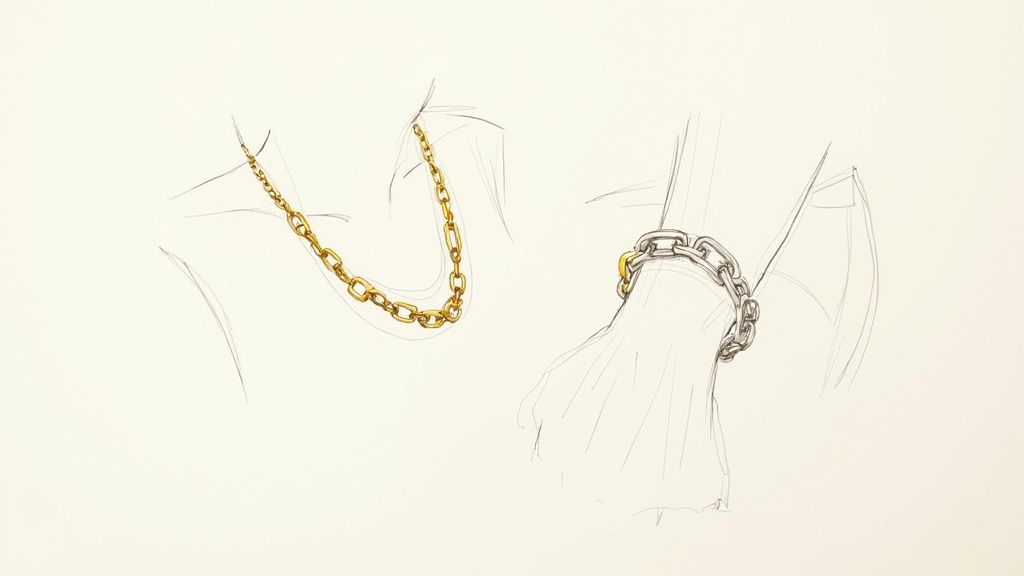
Before you turn to any high-tech tools, there are a few classic, time-tested ways to figure out your undertone right from home. These are the methods stylists have used for decades, and they offer a great starting point for running a warm vs cool undertone test. All you need is a little observation. Just be sure to do these checks in natural daylight on clean, makeup-free skin for the most reliable results.
Probably the most well-known trick is the Vein Test. It’s simple: just look at the veins on the inside of your wrist. If they have a greenish tint, you most likely have warm undertones. If they appear blue or purplish, you’re in the cool-toned camp. Can’t really tell, or see a bit of both? That’s a good sign you might have a neutral undertone.
The Fabric and Jewelry Tests
Another fantastic at-home method is the White Fabric Test. This one is all about seeing how your skin reacts to different shades of white.
- Find a piece of pure, crisp white fabric and hold it up to your face.
- Now, do the same with an off-white or cream-colored fabric.
If that stark, pure white makes your skin look bright and clear, you’re likely cool-toned. But if it makes you look washed out and the creamy, off-white shade is far more flattering, you’re probably warm-toned. If you look great in both, you're likely neutral.
The Jewelry Test is a classic for a reason—it often gives a very clear answer. It’s a straightforward comparison between how silver and gold jewelry look against your skin.
- Silver/Platinum: These cooler metals tend to make cool undertones look radiant and clear.
- Gold/Rose Gold: Warmer metals like these typically bring out the natural glow in warm undertones.
To try this, just lay a piece of silver and a piece of gold jewelry against your skin, ideally near your neck or face. See which one makes your complexion look healthier and your features stand out more. If you're curious about why these metals interact with skin tones differently, you can delve deeper into the differences between sterling silver and gold-plated jewelry to get more insight.
While manual tests are a fantastic first step, they can sometimes produce conflicting results, especially for those with neutral undertones. It’s best to try multiple tests and look for a consistent pattern rather than relying on a single method.
The key is to look at the big picture. If your veins look blue, silver jewelry makes you sparkle, and pure white fabric is your friend, you have a pretty strong case for a cool undertone. Think of these tests as the foundational building blocks of color analysis, which will ultimately help you answer that bigger question: "what is my color season."
Comparing Manual vs AI Undertone Analysis
When it comes to figuring out your warm vs cool undertone test, you’re essentially choosing between old-school observation and modern technology. It really boils down to what you need: a quick gut check or a precise, data-backed answer.
The manual methods, like the classic vein test or seeing if gold or silver jewelry suits you better, are fantastic starting points. They’re fast, free, and you can do them right now. They get you thinking about your personal color palette without any commitment.
The trouble is, they are notoriously subjective. The results can swing wildly depending on the lighting in your room, whether you have a tan, or even just what you think your undertone should be. It's incredibly common to get mixed signals—seeing blue veins (cool) but feeling like gold jewelry (warm) looks best—which can leave you more confused than when you started.
The Shift to Objective Data
This is exactly where AI-powered analysis changes the game. Instead of relying on how you interpret what you see, an AI tool analyzes the actual pixel data in a photo of your face. These algorithms are trained to pick up on the subtle red, yellow, and blue tones in your skin that the human eye often misses, taking the guesswork completely out of the equation.
The technology is quite sophisticated. To get a sense of how it works, you can look at AI's capabilities in photo colorization, which demonstrates how algorithms interpret and apply color data. This objective approach delivers a level of precision that you just can't get from a glance at your wrist.
The core difference lies in objectivity. A manual test asks for your opinion, while an AI analysis provides a calculation. This shift from perception to data is what makes AI a more reliable tool for significant style investments.
Think of it this way: a quick vein check is probably fine if you're deciding on a new t-shirt. But if you’re about to spend a lot of money on a new hair color or build a capsule wardrobe from scratch, you'll want the solid foundation that an objective AI analysis provides.
The image below shows one of the most popular at-home methods, the vein test, and how to interpret the colors you see.
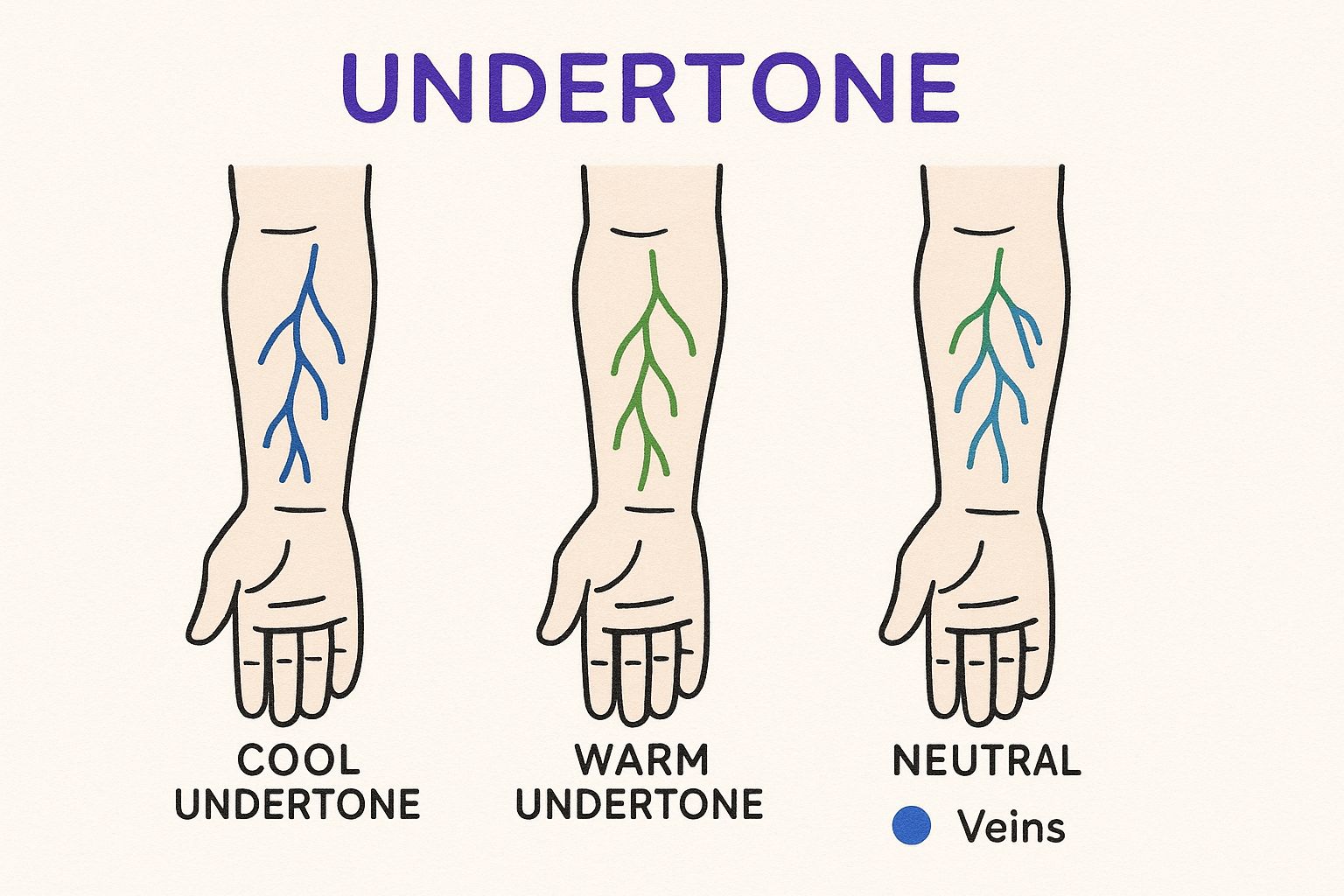
As you can see, distinctly blue or purple veins point to a cool undertone. If they look more greenish, you're likely warm. A mix of both often means you have a neutral undertone.
Feature Comparison Manual vs AI Undertone Testing
To lay it all out, this table breaks down how the traditional manual tests stack up against a modern AI analysis. It’s designed to help you decide which approach fits your needs best.
| Feature | Manual Tests (Vein, Jewelry, etc.) | AI-Powered Analysis |
|---|---|---|
| Accuracy | Subjective and very dependent on lighting and personal interpretation. Results can be inconsistent. | High, because it's based on objective analysis of skin pixel data. |
| Objectivity | Low. Heavily influenced by personal perception, existing biases, and environmental factors. | High. Delivers data-driven results that are free from human opinion or poor lighting. |
| Convenience | Instantly accessible anywhere, anytime. No tools or tech needed. | Requires a smartphone, good natural lighting for a photo, and an internet connection. |
| Cost | Completely free to perform on your own. | Usually requires a one-time fee for the detailed analysis and report. |
| Best Use Case | Perfect for initial curiosity, casual exploration, and non-committal style choices. | Ideal for major style decisions like hair color, foundation matching, and wardrobe investments. |
So, which one is right for you? It truly depends on your goal. Manual tests are great for dipping your toes in the water. But if you want dependable results that you can confidently use to guide your style and shopping decisions, an AI-powered analysis is definitely the way to go.
Common Mistakes When Finding Your Undertone
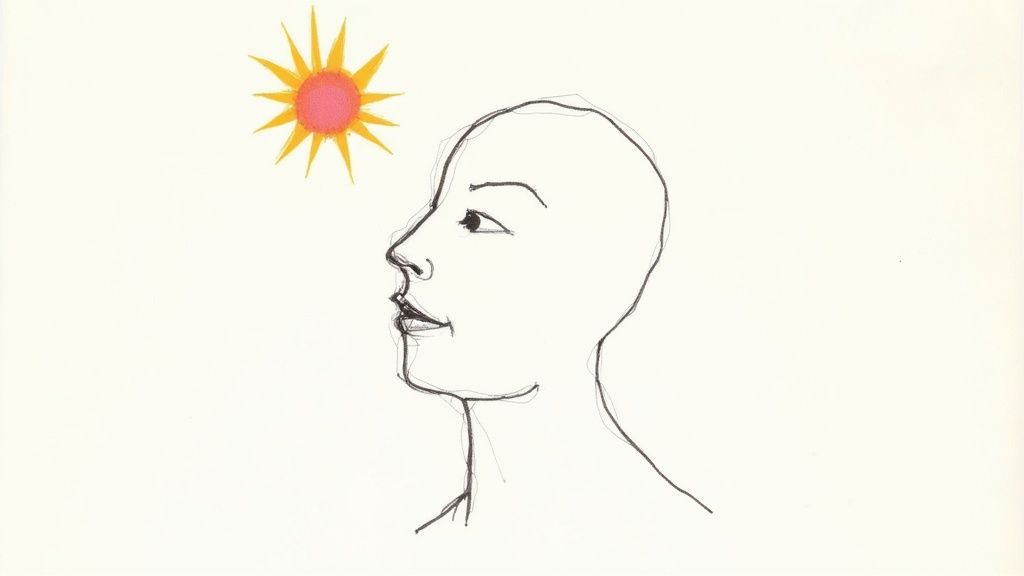
Starting a warm vs cool undertone test feels like you’re about to crack a major style code. The problem is, a few common slip-ups can send you in the completely wrong direction, leaving you more confused than when you started. Getting a reliable result is the whole point, so steering clear of these pitfalls is how you’ll get an answer you can actually trust.
One of the biggest culprits? Bad lighting. Testing your skin under artificial light is a guaranteed way to get a skewed result. The warm, yellow glow from a lamp or the cool, harsh light in an office will cast its own color onto your skin, making it impossible to see the true hues underneath. Always, always use natural daylight.
Ignoring Your Skin's Surface Tone
Another major hurdle is getting your surface tone mixed up with your undertone. Your surface tone is the color you see on top—the one that changes with sun exposure, flushing, or even your health. You have to look past these temporary conditions to get an accurate read.
Here are a few things that can throw you off:
- Sun Tans: A tan adds a warm, bronze layer, but it doesn't touch your natural undertone. Your underlying warm, cool, or neutral base is still there. This is why it’s best to test on skin that doesn't see much sun, like the inside of your wrist.
- Redness or Rosacea: That pink or red flush on the surface is a skin condition, not a sign of a cool undertone. It's entirely possible to have warm, golden undertones and still deal with surface redness.
- Sallowness: If your skin looks a bit dull or yellowish, it could be due to lifestyle or health factors. Don't mistake this temporary cast for a naturally warm undertone.
The most critical distinction to make is between your overtone (the surface color that changes) and your undertone (the permanent hue underneath). Your undertone is constant, regardless of a tan, a blush, or a skin flare-up.
Relying on a Single Test Result
Maybe the single biggest mistake is pinning all your hopes on one test. The vein test, for example, is notoriously subjective. What looks green to you might look blue-green to someone else. The jewelry test can be just as tricky, especially if you already have a strong preference for either gold or silver.
To get a truly accurate reading, you need to collect evidence from a few different sources. Think of it like a mini-investigation where multiple clues point to the final conclusion.
- Vein Test: Look at your wrist. Do your veins lean more green or more blue?
- Fabric Test: Hold pure white and then off-white fabric next to your face. Which one brightens you up?
- Jewelry Test: Does silver or gold make your skin pop and look more radiant?
- Finger Pinch Test: Gently pinch your fingertip and watch the color return. Is it a cool, purplish-red or a warmer, peachy-red?
If three out of the four tests point to "cool," you can be pretty confident in that assessment. If your results are all over the place, that’s a huge clue in itself—you likely have a neutral undertone. By combining methods, you stop guessing and start making an informed decision.
When To Use an AI Color Analysis Tool
While the classic at-home tests are a fantastic starting point, there are times when you need more certainty than the vein test can provide. An AI-powered warm vs cool undertone test delivers an objective, data-driven answer, which is exactly what you want for decisions that have a real impact on your style—and your wallet.
Think of it like getting a second opinion from a specialist before making a big commitment. You wouldn't just guess when buying a house, and the same thinking applies to defining your personal style. AI tools cut through the subjectivity and guesswork that so often lead to confusing or conflicting results from manual tests, giving you a solid foundation to build from.
For High-Impact Style Decisions
I always recommend turning to AI when you're facing a choice that's either expensive or long-term. The consistency you get from a data-backed analysis ensures you'll make a decision you’ll love for years, not just a few weeks.
Here are a few moments when an AI tool is a particularly smart move:
- Before a major hair color change: Drastically changing your hair, like going from dark brunette to a light blonde, is a huge commitment. An AI analysis can confirm whether ashy, platinum, or golden tones will genuinely flatter your skin instead of working against it.
- When shopping for expensive foundation online: We’ve all been there—trying to find the perfect foundation match without trying it on is a gamble. AI can pinpoint your undertone with precision, which dramatically improves your odds of picking the right shade the first time.
- While planning a capsule wardrobe: The whole point of a capsule wardrobe is to have a curated collection where everything works together. An objective analysis of your best colors ensures every single piece you invest in will look harmonious.
Here’s a look at what you might see from an AI analysis—a clear, data-backed result that leaves no room for doubt.
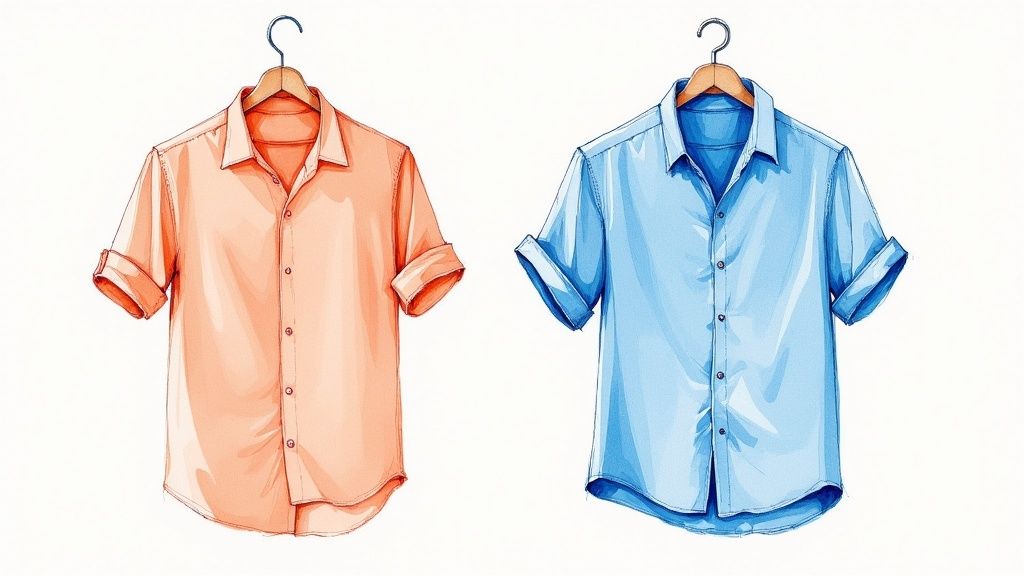
Getting a straightforward result like this is exactly what you need when the at-home tests just leave you feeling more confused than when you started.
When you're getting mixed signals—maybe your veins look blue, but you're sure gold jewelry looks better on you—an AI tool is the ultimate tiebreaker. It gets past subjective perception by analyzing the actual pixel data of your skin.
Ultimately, using AI gives you the confidence to make those bigger style moves. Once your undertone is locked in, you can take the next step and learn how to find my color palette with complete certainty.
Frequently Asked Questions About Skin Undertones
We get a lot of questions about the finer points of figuring out your undertone. Let's clear up some of the most common ones that come our way.
Can My Undertone Change with a Tan?
Nope, it can't. Your undertone is locked in by your genetics and stays the same your entire life.
What does change is your surface skin tone, often called your overtone. Sun exposure can definitely make your skin darker, but those underlying warm, cool, or neutral hues are permanent. This is exactly why a color that makes you glow will always work for you, no matter the season.
What if I Get Mixed Results from the Manual Tests?
Getting conflicting signals is incredibly common, and it's usually a big clue that you have a neutral undertone. Neutral undertones have a nice, even mix of both warm and cool hues.
Inconsistent lighting is another major culprit for confusing results. So, if you find that both silver and gold jewelry seem to work, and you can spot both blue and green veins at your wrist, you're almost certainly in the neutral camp.
Answering these last few questions can really help finalize your warm vs. cool undertone test. If you’ve tried the manual methods and still feel stuck, an AI analysis can offer the objective confirmation you need to finally feel confident about your undertone.
How Accurate Are AI Undertone Tools?
Generally speaking, AI photo analysis is much more accurate than trying to eyeball it yourself. The technology analyzes the actual pixel data in a photo of your skin, which removes a lot of the guesswork.
But here’s the catch: its accuracy completely hinges on the quality of the photo you provide. For the best results, you absolutely need a high-quality picture taken in bright, natural daylight, with a completely bare face—no makeup. When you follow those rules, it's a very reliable way to find your undertone.
Take your style to the next level with a professional analysis
You already know the theory. Now discover exactly which colors and styles enhance your personal image.
Loading...
Complete PDF report in less than 5 minutes
Your color season and personalized palette
Specific makeup and clothing recommendations
Based on professional color analysis
One-time investment:
One-time payment, no subscriptions. Instant access.